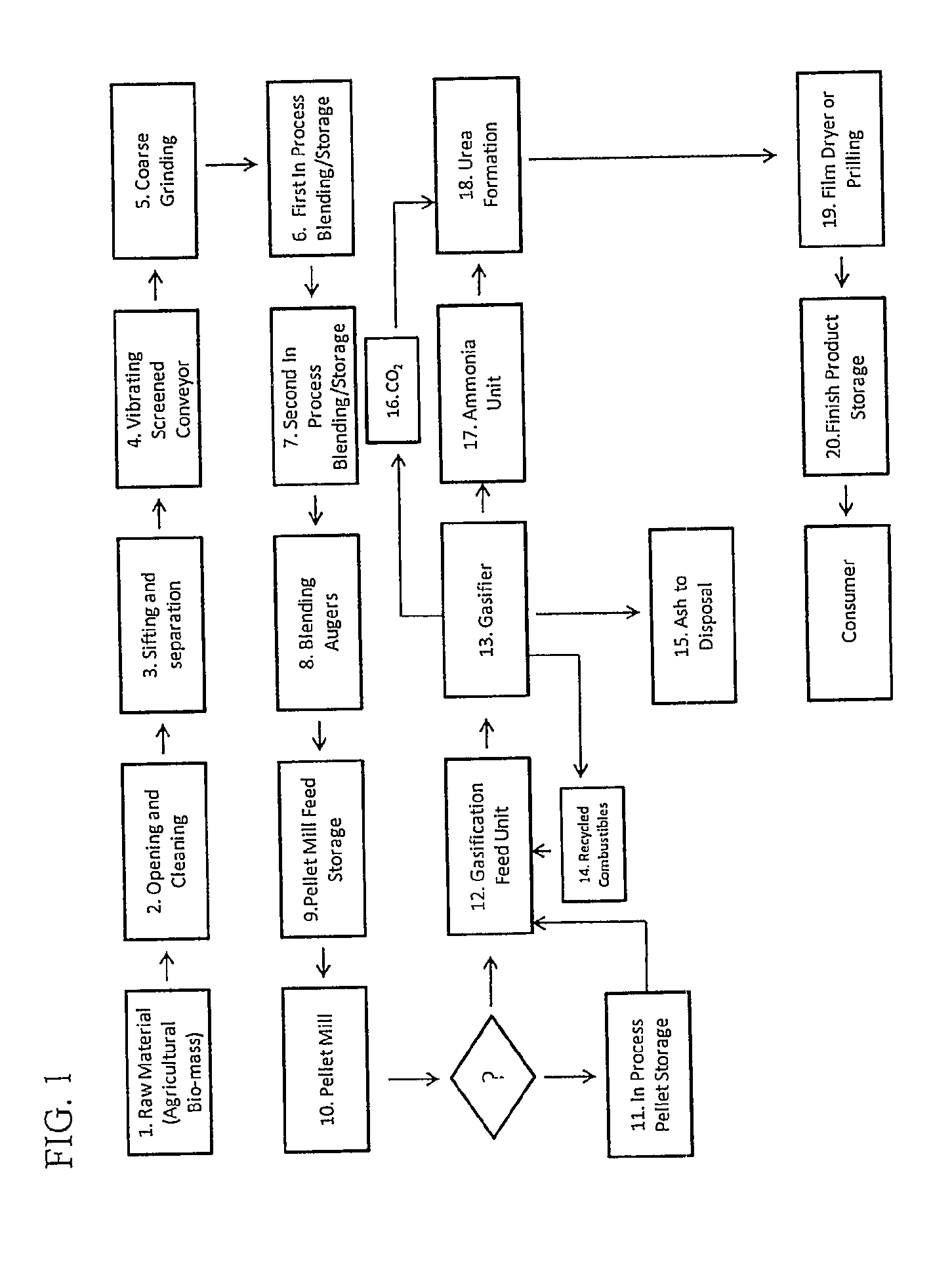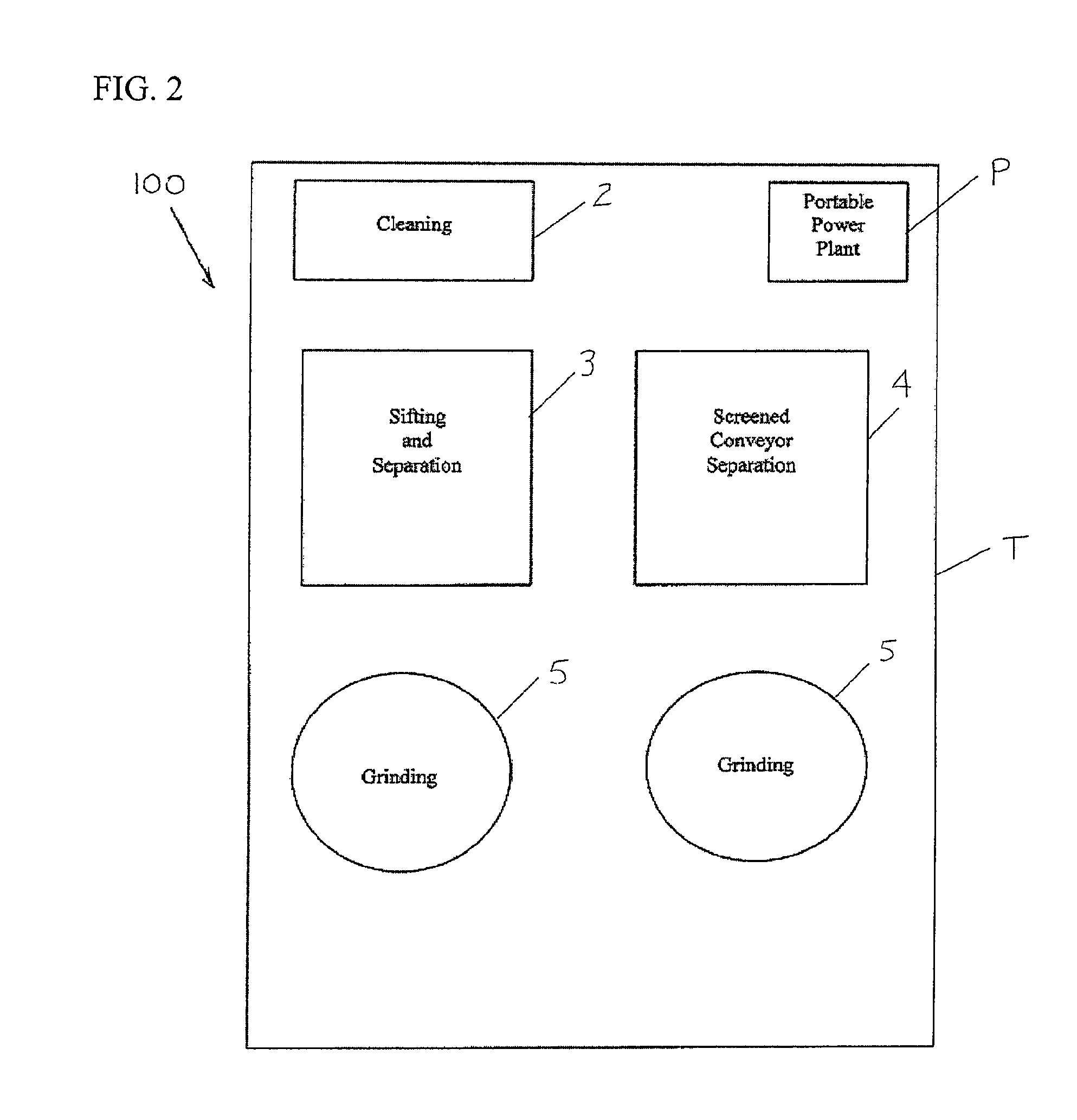Modularized system and method for urea production using a bio-mass feedstock
a bio-mass feedstock and module technology, applied in the direction of biofuels, waste based fuels, fuels, etc., can solve the problems of not being able to directly use to produce higher-order chemicals such as urea, the prior art requires large production units or large-scale plants, and the gasification of bio-mass to produce urea is yet untapped. , to achieve the effect of small footprint, cost-effectiveness and small scal
- Summary
- Abstract
- Description
- Claims
- Application Information
AI Technical Summary
Benefits of technology
Problems solved by technology
Method used
Image
Examples
Embodiment Construction
[0020]All six technical barriers listed in the Background of the Invention section are addressed in the following technical description for the conversion of biomass via the process of gasification to produce urea. The process—which is designed for cost effective low volume production (e.g. feed rates of 1 to 5 tons per hour) and modularized for improved process control and portability—provides a clean and consistent bio-mass feedstock to the gasifier. An on-demand organic oil injector is used to supplement the bio-mass mist in the gasification unit to maintain a constant, low fluctuating burn of the bio-mass. The gasification process also has a feed control system that serves as a bio-mass feed regulator. The gasified bio-mass (syngas) is then cleaned by running the syngas through a set of cyclones (gas cleaning system-scrubbers) before introducing the syngas to the ammonia / urea formation units.
[0021]Unlike the prior art systems, the process includes a bypass loop recycle system at...
PUM
| Property | Measurement | Unit |
|---|---|---|
| particle size | aaaaa | aaaaa |
| temperature | aaaaa | aaaaa |
| pressure | aaaaa | aaaaa |
Abstract
Description
Claims
Application Information
 Login to View More
Login to View More - R&D
- Intellectual Property
- Life Sciences
- Materials
- Tech Scout
- Unparalleled Data Quality
- Higher Quality Content
- 60% Fewer Hallucinations
Browse by: Latest US Patents, China's latest patents, Technical Efficacy Thesaurus, Application Domain, Technology Topic, Popular Technical Reports.
© 2025 PatSnap. All rights reserved.Legal|Privacy policy|Modern Slavery Act Transparency Statement|Sitemap|About US| Contact US: help@patsnap.com



